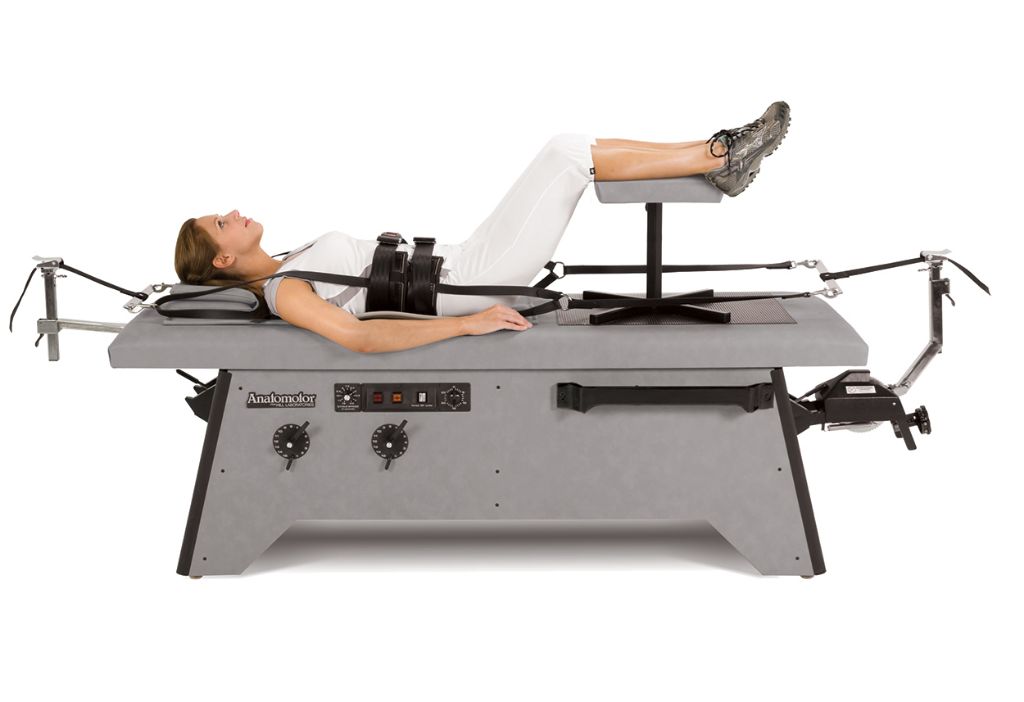What Does The Chiropractic Roller Table Do?
A chiropractic roller table is a specialized treatment table used by chiropractors to perform spinal adjustments and traction. The table has a moveable bed that rolls back and forth allowing the chiropractor to mobilize the spine. Roller tables provide oscillating and undulating motion to help restore joint mobility and relieve pressure on the spinal discs and nerve roots.
Chiropractic roller tables were first developed in the early 1900s as chiropractic care was emerging as a profession. According to https://www.chiroeco.com/brief-history-of-chiropractic-tables/, the first patented chiropractic table was designed in 1910 by physician and chiropractor Albert Head. This early roller table had a leather upholstered top that could flex and curve during treatments. In the 1920s and 1930s, electrically powered roller tables were introduced allowing smoother oscillating movements.
Today, there are many sophisticated chiropractic roller table models with adjustable speeds, flexion, and cervical and lumbar mobilization options. Chiropractors use roller tables along with other techniques like spinal manipulation and manual joint adjustments as part of a comprehensive treatment plan.
Benefits of Chiropractic Roller Tables
Chiropractic roller tables provide several benefits for patients seeking spinal alignment and pain relief. One of the primary benefits is helping to align the spine and relieve back pain. As patients lay on the table, the rollers provide gentle traction and stretching which helps decompress the spine, relieve pressure on nerves, and mobilize spinal joints. This can reduce back pain caused by spinal misalignments, herniated discs, sciatica, and more. Research shows chiropractic roller tables significantly reduce chronic lower back pain after just a few sessions.
Chiropractic roller tables also help improve range of motion. The rolling and stretching opens up the spaces between the vertebrae, allowing patients to move more freely. Patients often feel their back and neck are more flexible after using a roller table. The tables help increase mobility in areas that have become tight or restricted.
Additionally, chiropractic roller tables provide relaxation of the back and neck muscles. The rolling motion gently massages and loosens up muscles that have been strained or are carrying tension. This provides soothing relief in addition to the spinal alignment benefits.
Studies have found chiropractic roller tables effective for a variety of conditions including sciatica, arthritis, herniated discs, degenerative disc disease, and more. The benefits come from gently realigning the spine, increasing range of motion, and relaxing muscles in the back and neck (Caddel, 2022).
How Chiropractic Roller Tables Work
Chiropractic roller tables utilize a specialized technique called spinal decompression therapy. The table has a split design so that the upper and lower parts of the body can move independently. As the table rolls back and forth, it gently pulls and relaxes the spine to create a pumping action. This motion creates space between the vertebrae, allowing herniated discs to retract back into place.
During the rolling technique, the lower section of the table moves while the upper section remains stationary. The motion causes the vertebrae to separate slightly, creating a vacuum effect that draws in bulging discs. Then the upper section moves while the lower section stays still, allowing compressed joints to decompress. The alternating motions gently flex and extend the spine to relieve pressure and dysfunction.

The motion of the roller table manipulates the spine in a precise, calculated manner. Sensors and computers control the speed, direction, and degree of traction. This allows the chiropractor to target specific problem areas. The gentle rhythm relaxes muscles while improving mobility, flexibility, and range of motion. Over a series of sessions, the technique can help reduce pain and discomfort caused by herniated, degenerative, or compressed discs.
Source: https://paidforarticles.com/index.php/rolling-away-pain-how-chiropractic-roller-tables-work-754385
Who Can Benefit from Using a Roller Table
Chiropractic roller tables can benefit a wide range of patients, especially those suffering from back pain, sciatica, scoliosis, and other spinal conditions. The gentle stretching and mobilization provided by a roller table can help relieve pain and pressure on the nerves, while improving flexibility and range of motion.
According to an article on Medium, “The benefits of chiropractic roller tables include reduced tension and pain, improved range of motion and flexibility, increased spinal mobility, faster recovery from injuries, enhanced circulation, and an overall greater sense of relaxation.” (Source)
Athletes and other active individuals can also benefit greatly from routine sessions on a roller table. The massage and stretching helps muscles stay loose, speeds up recovery, and prevents injuries related to tightness or restricted range of motion. This makes roller tables a popular treatment choice among everyone from weekend warriors to professional athletes.
Overall, a chiropractic roller table may be recommended for patients who experience frequent back and neck pain, limited mobility, muscle tightness or spasms, poor circulation, or other issues that can be alleviated through gentle traction and mobilization of the spine.
Risks and Considerations
While chiropractic roller tables can provide many benefits, there are some risks to be aware of if they are used improperly or too aggressively. One key risk is potential injury from excessive spinal rotation or flexion if proper protocols aren’t followed. According to research from the National Center for Biotechnology Information, side effects like muscle soreness, headaches, and nausea can occur if spinal manipulations on a roller table are overly forceful or frequent (Macanuel, 2005).
To mitigate risks, it’s crucial to work with a licensed, experienced chiropractor who follows safe methods and doesn’t manipulate the spine beyond its normal range of motion. The Quora article “Are there any contraindications for using a chiropractor rolling table?” notes that chiropractors should evaluate patients for any conditions that could be aggravated by spinal adjustments, including spinal injuries, osteoporosis, inflammatory arthritis, or aneurysms. If a patient has any of these conditions, modifications or precautions should be taken.
Overall, chiropractic roller tables are very safe when used properly under professional supervision. However, patients should understand there are potential risks if providers are overly aggressive with manipulations. Working with a licensed chiropractor who follows ethical protocols helps minimize any dangers.
What to Expect During a Session
A typical session on a chiropractic roller table involves the following steps:
You’ll start by lying face down on the table, which has rollers underneath that can be adjusted. The chiropractor will ensure you are properly positioned, with your head, arms, and legs supported.
They will then begin lightly rolling the table, allowing your body weight to provide gentle traction and stretching. The rollers will target different sections of your spine, lower back, and hips. The chiropractor controls the speed, direction, and pressure.
As the table rolls, you may feel light popping or cracking sounds in your back. This is normal and occurs as the spine is gently manipulated. Let your chiropractor know if any spots are particularly tender or painful.
The chiropractor will make adjustments as needed, such as applying targeted pressure in certain areas. They may also incorporate stretching, massage, or other soft tissue techniques as part of the roller table session.
After 10-20 minutes on the roller table, you’ll be assisted off the table. The chiropractor will discuss how your back and body are feeling after the treatment.
Overall, roller table sessions aim to improve spinal alignment, relax muscles, increase mobility, and reduce back pain and tension. It’s a gentle, non-invasive form of chiropractic care.
For sources, see: https://medium.com/@ezracaddel/the-benefits-of-chiropractic-roller-tables-improving-patient-outcomes-c8ec49bd401d
Cost and Insurance Coverage
A chiropractic roller table session typically costs between $50 and $100 per visit. However, costs can vary widely depending on your location, chiropractor, and the length and number of sessions. Initial consultation and exam fees may also apply.
Most major medical insurance plans cover a portion of chiropractic treatment costs, including those using a roller table. Coverage varies by plan, but often includes a set number of chiropractor visits per year. Contact your insurance provider to learn about your specific chiropractic benefits and any out-of-pocket costs.
Some chiropractors may offer discounted rates for seniors, students, military members, low-income patients, or those without insurance. Ask your chiropractor if any reduced fee options are available. If the cost per session is prohibitive for your budget, consider spacing out your appointments further apart to make the expense more manageable.
Results and Effectiveness
Research has shown that chiropractic roller tables can be highly effective at providing pain relief, increased mobility, and improved spinal health. One study found that using a roller table before chiropractic adjustments resulted in patients reporting a 20-30% greater reduction in pain compared to adjustments alone (https://www.chiroeco.com/chiropractic-roller-table/). The rhythmic oscillation and stretching provided by the roller table helps to relax muscles, loosen connective tissue, increase blood flow, and gently decompress the spine.
Many patients report significant improvements after incorporating regular sessions on a chiropractic roller table. For example, one patient stated “After years of chronic lower back pain that limited my mobility, using the roller table just twice a week has allowed me to move freely again without pain for the first time in years” (https://medium.com/@ezracaddel/the-benefits-of-chiropractic-roller-tables-improving-patient-outcomes-c8ec49bd401d). Another said “I was skeptical at first, but after a few sessions, my range of motion improved drastically. My chiropractor showed me the before and after x-rays, and I couldn’t believe the difference in my spine after using the roller table.”
At-Home Roller Tables
For those interested in experiencing the benefits of a chiropractic roller table outside of a chiropractor’s office, there are some at-home options available. While not quite the same as a professional-grade roller table, at-home versions can provide gentle spinal decompression and help improve mobility.
At-home roller tables are designed to allow users to lie down and slowly roll from head to tailbone, stretching out the spine. Most feature a firm cushioned surface and wheels or rollers on the bottom. Models vary in size, adjustability, weight limits, and available accessories. Prices range from around $100 for basic models to over $1000 for higher-end electric options.
Benefits of an at-home roller table include convenience, ability to use daily, and potential cost savings versus regular chiropractic visits. They allow gentle traction of the spine to help relieve pressure, stimulate blood flow, and improve range of motion. At-home versions are best for maintenance between chiropractic treatments, not as a complete replacement.
Considerations include limited adjustability compared to professional models. For optimal results, work closely with your chiropractor for proper usage guidelines. Size and weight limits may also restrict some users. Research product quality carefully before purchasing. While generally low-risk with proper use, discuss with your chiropractor if you have any spinal conditions or injuries. As with any at-home therapy equipment, use caution and stop if any pain or discomfort occurs.
Finding a Chiropractor with Roller Tables
If you are interested in trying a chiropractic roller table, the first step is finding a chiropractor in your area that offers this treatment. Here are some tips for locating chiropractors with roller tables:
Check association directories. The American Chiropractic Association has an online directory you can search by location. Contact chiropractors in your area to ask if they have a roller table.
Search online listings. Sites like Yelp allow you to search for chiropractors and read reviews mentioning roller tables.
Look for chiropractors advertising roller table services on their website or social media pages. Search for terms like “roller table chiropractor [your city]”.
Ask for recommendations from friends, family, or your primary care provider.
Once you have found some options, call to ask questions like:
- Do you have experience using a chiropractic roller table?
- How often do you use the roller table on patients?
- What results have you seen from roller table treatments?
- How is a session on the roller table different from a traditional chiropractic adjustment?
Finding an experienced chiropractor can help you get the full benefits from this unique therapy.




